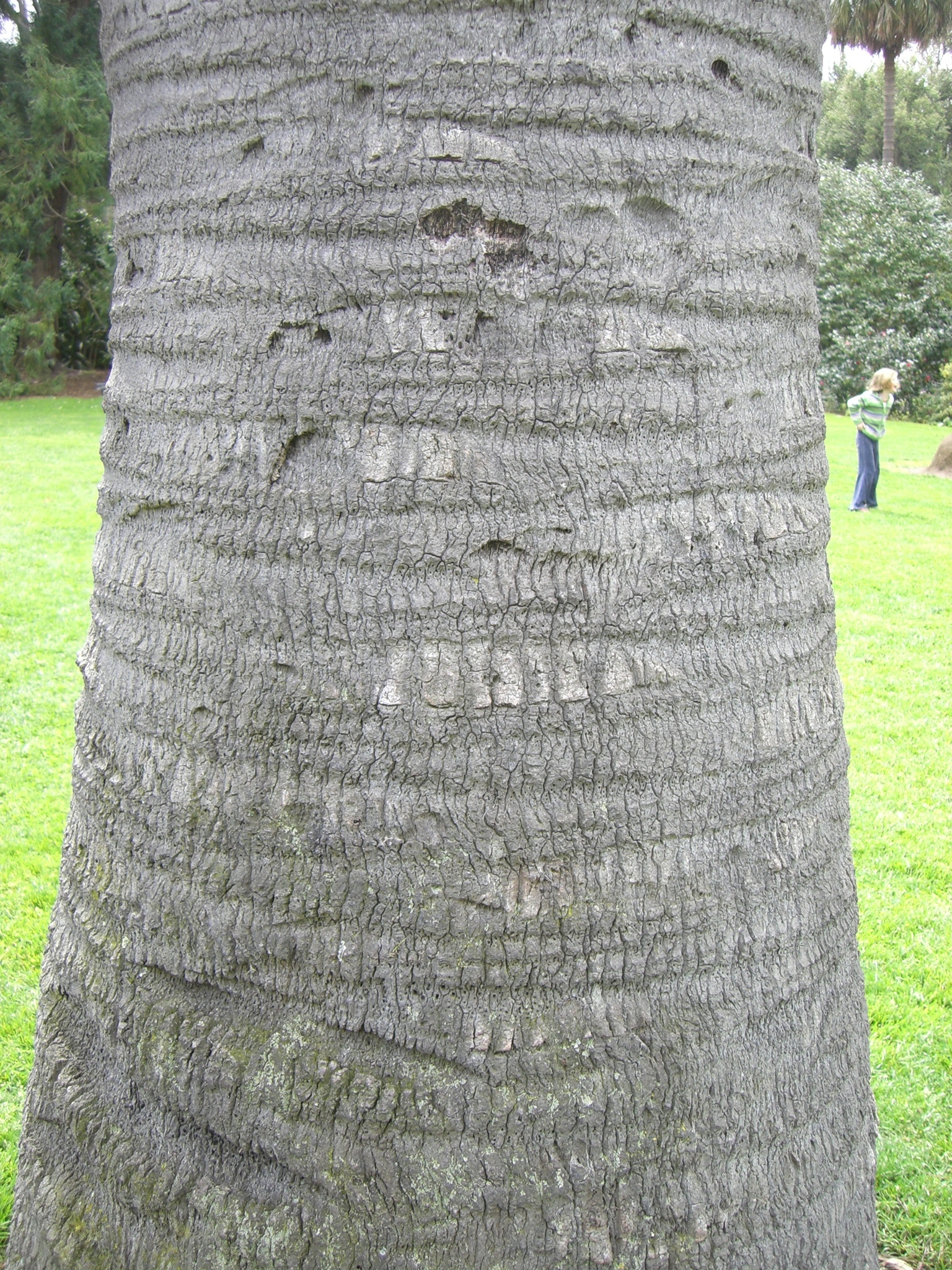
After Patrick Murray, Baron of Livingstone (d. 1671).
Solitary spined or spineless mostly medium-sized palms. Trunk woody, ringed. Crownshaft absent. Leaves occasionally palmate although mostly shortly but conspicuously midribbed (costapalmate), crowded in a large crown, generally deeply divided. Leaflets numerous, narrow, 2 lobed (occasionally broad and with several lobes) the tips erect or drooping. Leaf stalks usually relatively long and with sharp teeth along the margins although these may be shed. Leaf sheath forming a mat of fibre and with a membranous tongue. Panicles arising among the leaves, shorter or longer than the leaves. Fruit small, roundish, brown, red, blue or black, 1 seeded.
Popular palms, especially in cooler climate areas. Often used to line avenues and driveways. They occur naturally in a wide range of habitats, including closed forest, swamps, grassland and ridges.
The trunks have been used as pipes and for feed troughs for animals; the leaves are used for thatching and hats, and the heart is edible (as are some of the oily fruits).
Fresh seed takes 1-4 months to germinate.
Fan-leaved palms with a slender trunk and a large crown of leaves, each divided into numerous narrow leaflets. The leaves may hang down from the crown for some time after dying. Without these leaves it can be seen that the sheathing leaf bases consist of a mat of fibre and, on the opposite side from the sheath, there is a parchment-like tongue. These tongues are generally less ragged and more conspicuous in this genus than those of other fan palms.
About 30 species distributed in North Africa, Asia, SE Asia and Australia (14 species endemic).
SA: Adelaide (Adelaide Botanic Garden). NSW: Sydney (Royal Botanic Garden Sydney). Vic: Melbourne (Royal Botanic Gardens Victoria (Melbourne Gardens)).
Rodd (1998).
Source: (2005). Arecaceae. In: . Horticultural Flora of South-eastern Australia. Volume 5. Flowering plants. Monocotyledons. The identification of garden and cultivated plants. University of New South Wales Press.
